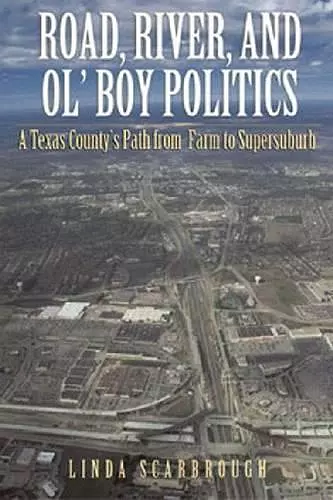Road, River, and Ol' Boy Politics
A Texas County's Path from Farm to Supersuburb
Format:Hardback
Publisher:Texas State Historical Association,U.S.
Published:31st Oct '05
Currently unavailable, and unfortunately no date known when it will be back

In 1946, Williamson County, Texas, was profoundly rural. Reflecting the Democratic Party represented in Congress by Lyndon Baines Johnson, the county was based on an isolated agricultural economy and contained a rich brew of ethnic groups and cultures. Half a century later, Williamson County was one of the five fastest growing counties in the United States, a staunchly Republican homogeneous supersuburb north of Austin whose economy depended on the global market for computers and other high-technology products. How did this radical transformation occur? It came about largely through the machinations of a handful of local political and economic ""bosses"" who brought to Williamson County two great federal public works projects: Interstate Highway 35 and a dam on the tiny San Gabriel River. Those projects swept away the farmers and ranchers whose way of life had defined the county for 100 years and triggered explosive population growth. In ""Road, River, and Ol' Boy Politics"", Linda Scarbrough tells a cautionary tale about the difficulties of anticipating ripple effects from large-scale public works ""solutions"" and of adequately planning for their environmental, economic, and cultural consequences. It is a central Texas tale that is pertinent in all of America's ""oasis"" cities across the dry Sun Belt, a repeating story that has come to define American patterns of suburban development. In her examination of the roots of the transformation of traditional agricultural land in an American county into modern suburbia, Scarbrough identifies three essential ingredients that are necessary for dynamic growth: the promise of a new source of water, the promise of a new major highway, and a politically skillful and determined local leader. Without these three key ingredients, the kind of growth that has occurred outside Austin, Dallas, Phoenix, Denver, and Salt Lake City is not likely to happen. This book analyzes the spectacular growth and radical transformation of one American county in the last half of the twentieth century in the same way that Robert Caro's ""The Power Broker"" parsed the development of New York City and Long Island, New York, by looking at the public works projects of Robert Moses and how they set the stage for New York's economic domination over the eastern United States. The chief difference is that in Williamson County, Texas, no Robert Moses existed; instead, there were several ""little Moses"" characters who profoundly altered this agricultural outpost outside Austin through the public works they brought to fruition.
ISBN: 9780876112021
Dimensions: unknown
Weight: unknown
300 pages